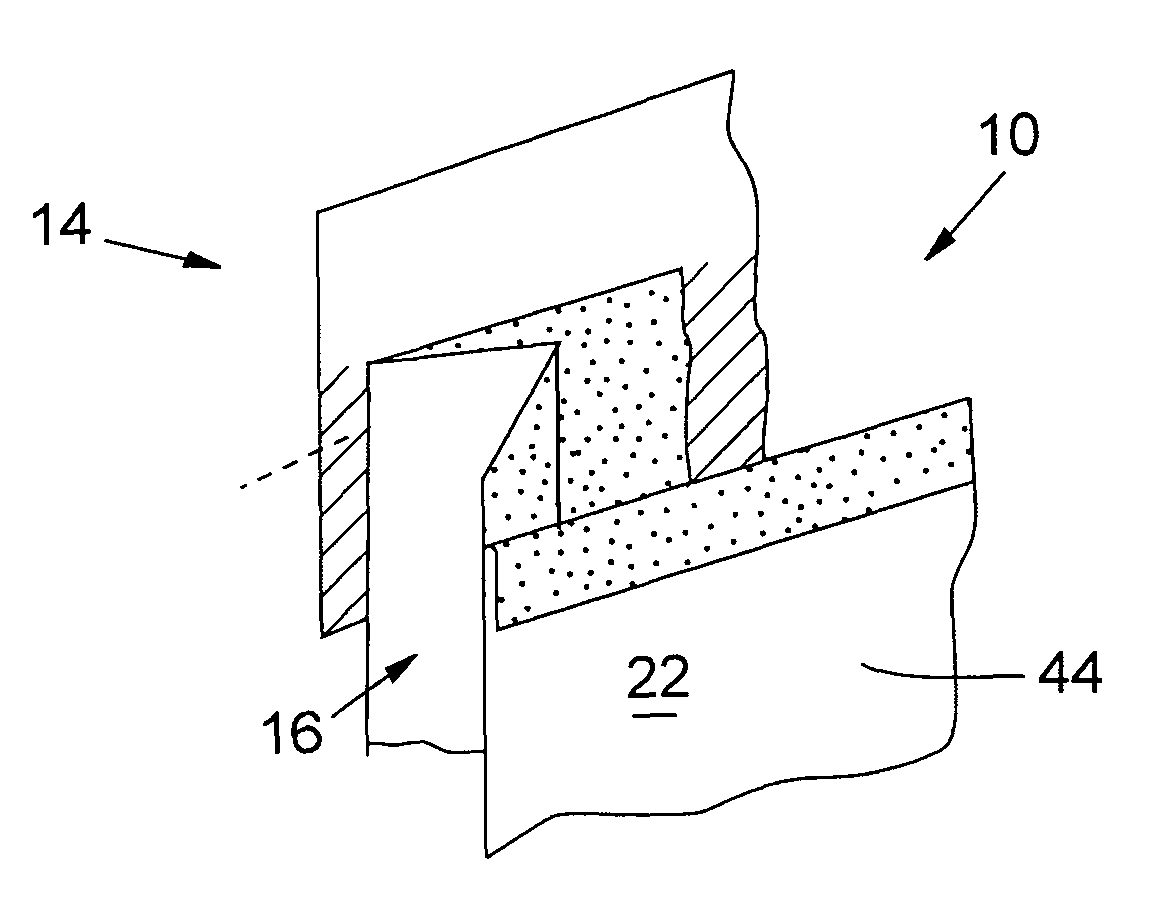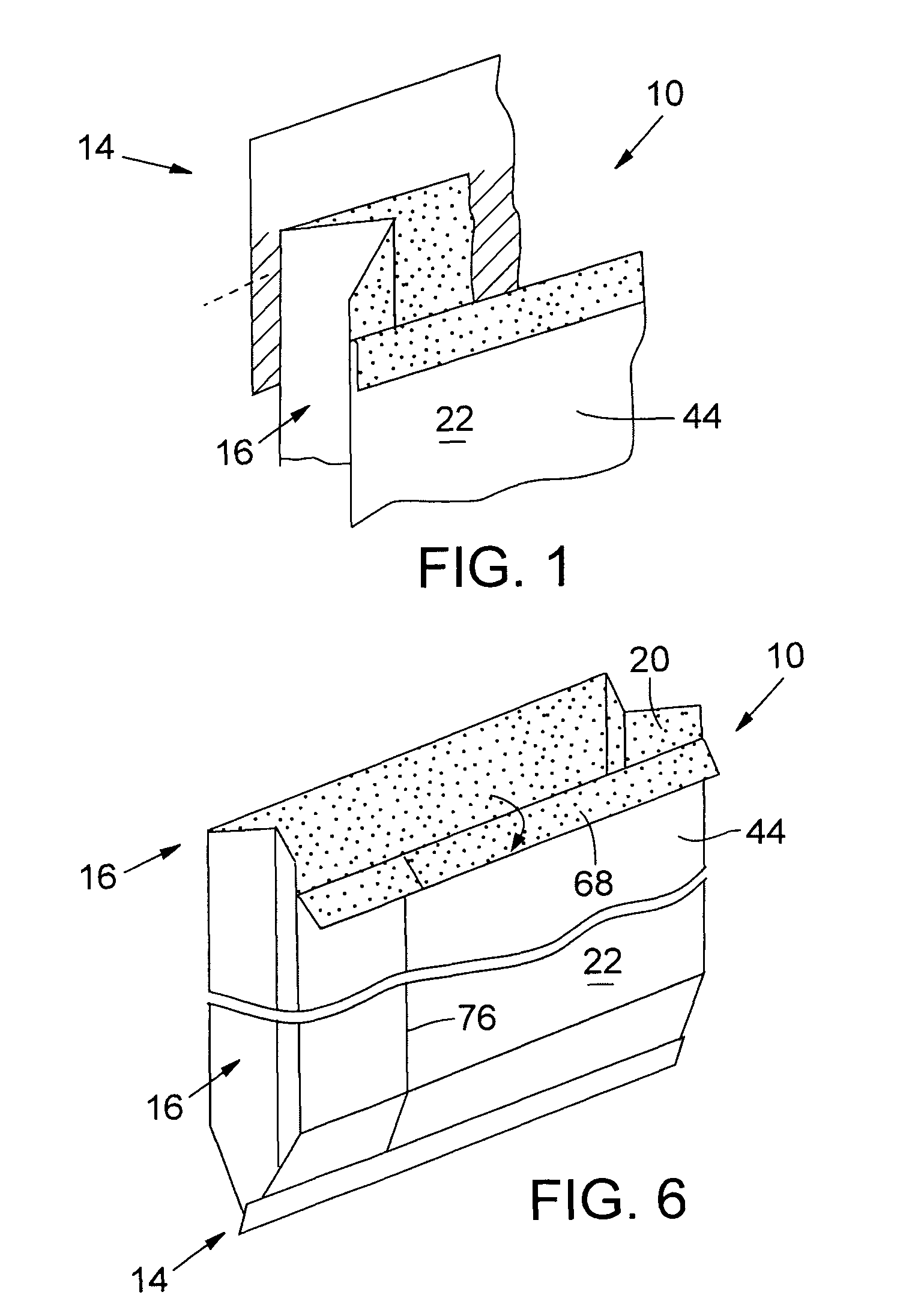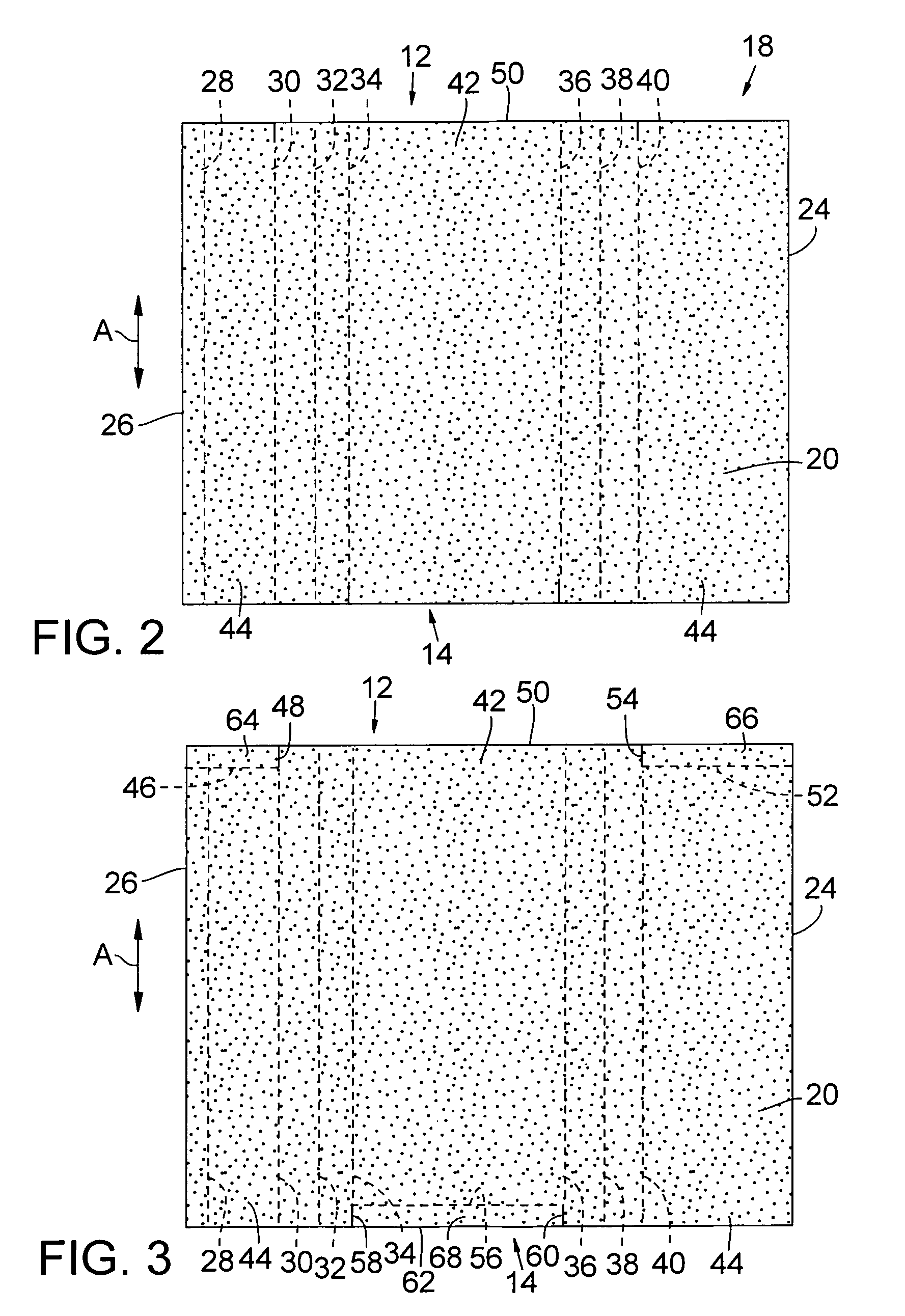Polywoven pinch bottom open mouth bag
a polywoven, bottom-opening technology, applied in the field of bulk material bags, can solve the problems of inability to close, holes in the bag inherently, and inability to sew, and achieve the effect of convenient closur
- Summary
- Abstract
- Description
- Claims
- Application Information
AI Technical Summary
Benefits of technology
Problems solved by technology
Method used
Image
Examples
Embodiment Construction
[0034]As noted above, the pinch bottom open mouth (“PBOM”) bag 10 according to the present invention is manufactured from a polywoven material, which is also sometimes called a polylaminated material. This material is well-known in the art and is used ubiquitously to manufacture sewn open mouth (SOM) bags. Again briefly described, the polylaminated or polywoven material is a single ply material that comprises two layers of material that are so intimately bonded together that the two layers define what is referred to in the industry as a single ply. The inner “layer” is a woven scrim of a polyethylene strand, and the outer “layer” is usually paper or polypropylene, although the outer layer may be other materials as well. The woven inner layer is inseparably bonded to the outer layer, as noted above, to define a single ply material. The inner scrim layer is polypropylene or high density polyethylene and the outer layer is typically a kraft paper, a bio-oriented polypropylene or a synt...
PUM
| Property | Measurement | Unit |
|---|---|---|
| adhesive | aaaaa | aaaaa |
| density | aaaaa | aaaaa |
| strength | aaaaa | aaaaa |
Abstract
Description
Claims
Application Information
 Login to View More
Login to View More - R&D
- Intellectual Property
- Life Sciences
- Materials
- Tech Scout
- Unparalleled Data Quality
- Higher Quality Content
- 60% Fewer Hallucinations
Browse by: Latest US Patents, China's latest patents, Technical Efficacy Thesaurus, Application Domain, Technology Topic, Popular Technical Reports.
© 2025 PatSnap. All rights reserved.Legal|Privacy policy|Modern Slavery Act Transparency Statement|Sitemap|About US| Contact US: help@patsnap.com



